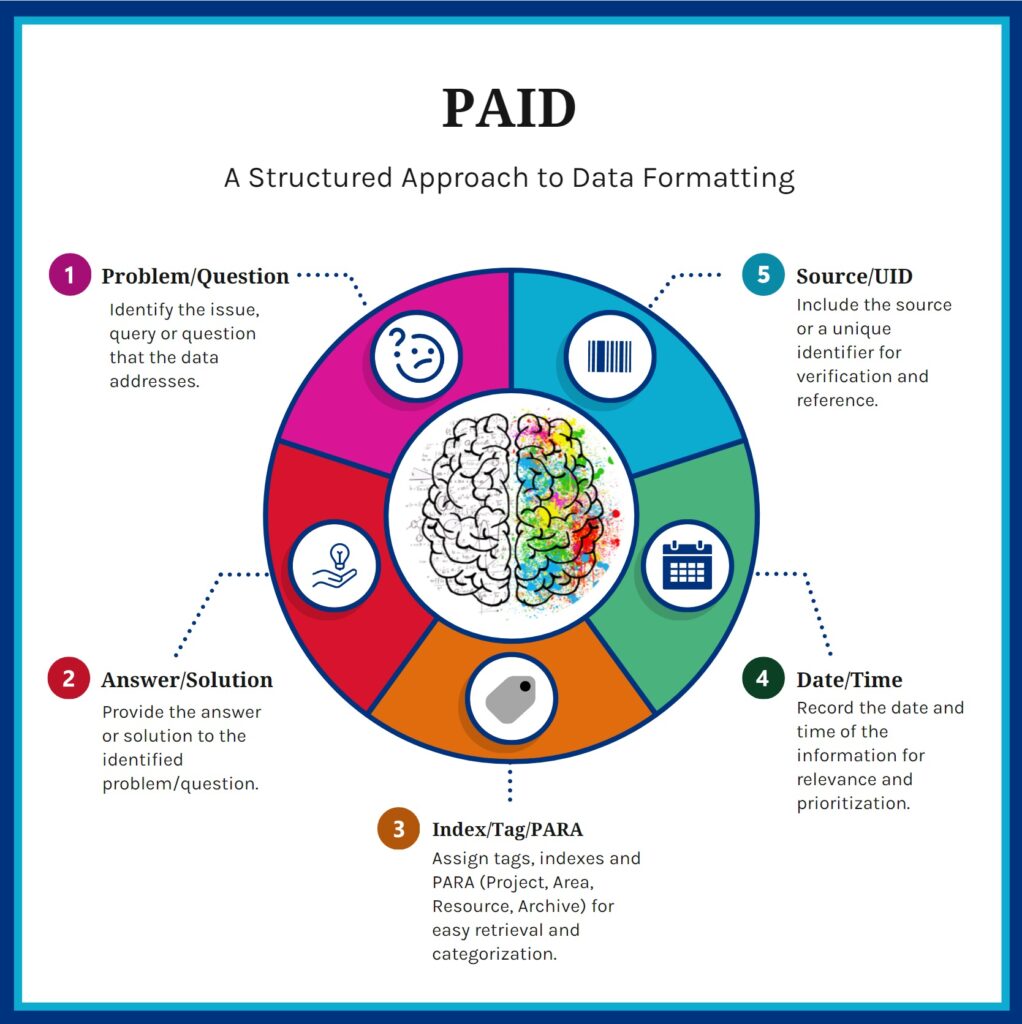In the digital era, managing information effectively is crucial. A study by the McKinsey Global Institute highlights that a robust AI-enabled knowledge management system can enhance productivity by up to 25% and reduce time spent searching for information by as much as 35%. [“]
In my previous article, “Harnessing the Power of the Second Brain for Personal and Corporate Knowledge Management” I explored the myriad benefits of cultivating a ‘second brain’ and the reasons why everyone should consider adopting this approach.
Building on that foundation, this article delves into the innovative concept of automating your ‘second brain’ through Artificial Intelligence (AI). By integrating two distinct AI bots into a sophisticated ecosystem, this method holds the potential to revolutionize how we process, store, and utilize information, enhancing our knowledge management capabilities significantly.
The Dual-Bot System
The first bot focuses on input: learning and creating a knowledge base. It seamlessly integrates with various sources like your email inbox, transcript notes, and other data used in your organization. This bot is responsible for extracting information from these sources and formatting it into a structured database.
The second bot is designed for consuming the knowledge base. It uses the organized data to provide insights, answer queries, and facilitate information retrieval.
Holistic Approach to Data
It operates on the assumption that every useful data fills a knowledge gap. Data that doesn’t fill a knowledge gap is not useful data. The challenge lies in organizing and interpreting the data in such a way that its purpose becomes clear. Even when you have information without an explicit question but it fills the knowledge gap, AI can infer and generate relevant questions, making data easier to understand for subsequent processing.
The Importance of Data Formatting
Efficient data management requires not just collection but also proper formatting. Attempting to process unformatted data is inefficient for both humans and AI. Well-structured data allows AI to operate more effectively, as it spends less processing power on interpretation and more on analysis and problem-solving.
Standardizing data inputs is crucial, and AI can assist in this process. AI and well structured prompts can be used to organize a large amount of data in various ways quickly, enhancing the efficiency of the bots in consuming this data.
The PAID Format: A Structured Approach

Building on the above, I infer that potentially highly effective format for building a second brain might be what I named the PAID system. All data can be formatted in 4 columns as follows:
- Problem/Question: Identify the issue, query or question that the data addresses.
- Answer/Solution: Provide the answer or solution to the identified problem/question.
- Index/Tag/PARA: Assign tags, indexes and PARA (Project, Area, Resource, Archive) for easy retrieval and categorization. This can serve the purpose of hierarchy and grouping of data.
- Date/Time: Record the date and time of the information for relevance and prioritization. Newer data have can be weighted for relevancy.
Optional:
- Source/UID: Include the source or a unique identifier for verification and reference.
The PAID system ensures that every piece of data directly corresponds to a specific question or problem. For instance, an organizational chart could answer “Who is the CFO of the company?” and similar positional queries. Organizational chart can be answer to thousands of questions, but only few questions are needed for AI to understand to which types of questions organizational chart is answer to.
When you come across knowledge that lacks a clear question, AI can assist by formulating relevant questions, thereby giving context to the data. It might seem as though this approach introduces new, unnecessary data that could already be deduced from existing information, and you would be correct.
However, it’s important to remember that the purpose is to provide context for a secondary bot, preventing it from expending its processing power on inferring this context.
Why Pre-Formatted Data Matters
Pre-formatting data significantly enhances the efficiency of the AI bot. Without this step, the bot expends considerable processing power just trying to understand and categorize the data. A well-organized database enables the AI to focus on understanding, searching, and matching your intent with the right information quickly and effectively.
Indexing and Time-Stamping for Efficient Retrieval
Indexing or tagging the data simplifies the search process for the AI. Incorporating date and time stamps adds a layer of relevance, allowing the AI to prioritize newer information. Although not mandatory, including the source of the data with each retrieval is recommended for manual verification and authenticity.

